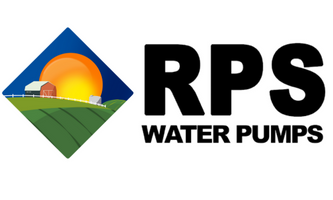

Answering Your Water Pump Questions
with RPS Engineer Mike

How many gallons per minute can i get from a 4 in well pump?
The great thing about 4” well pumps is that they are incredibly diverse in their application ranges. 4” pumps are normally in the 0.5HP - 5HP range, so can pump anywhere from a couple GPM to over 100 GPM. Past about 100 GPM and you’ll be wanting to increase your outlet diameter from 2” to 3”, and that’s cutting it really close for the engineering of a 4” pump.
We should also clarify that our 4” pumps are not 4” in the true sense of the word, but rather about 3.86”. We design them this way so that they can fit in standard 4” well casings, even our smaller volume 5 HP pumps! This is a feature that our customers really love; knowing that you can have high volumes in a smaller well makes everything feel more feasible for the DIY pump installer.
Figure 1: 05 RPS Series

Let’s take a lake at a couple different 4” well pumps, just to impress upon you how variable we can really get. All 5 of the pumps above are 4” (3.86”), ranging from 0.5 HP to 2 HP. These are our 05RPS Series, named that way since they’re most efficient around the 5 GPM mark. At that level you’re looking at Total Dynamic Head (TDH) ranges from about 200-700’. TDH is just a measure of pump capacity to push against gravity, and is useful for determining how much lift and PSI a pump can handle. So for example if you needed to pump up 200’ + 60 PSI (equivalent to another 140’ of lift), our 05RPS10 would do just about 6 GPM here.
Figure 2: 35/40RPS Series

This series of pumps is also, you guessed it, a bunch of 4” pumps. These ones are higher volume, higher HP pumps ranging from 1.5 HP to 5 HP. As a result they have lower TDH values, and would be useful for medium scale irrigation systems or large residential dwellings. A personal favorite of mine is the 40RPS30, which absolutely crushes 60 PSI at around 50 GPM. A great mid-range pump if you ask me.
Figure 3: 60/80 RPS Series

Finally we have here our largest set of 4” pumps before we move up in diameter. The 80RPS50 maxes out at 120 GPM, though that is at the edge of the pump curve so we recommend it more for the 75-100 GPM range. Most folks will use these pumps in high-scale agriculture or livestock applications, or for filling ponds quickly. Either way, this is about the maximum volume our 4” pumps are capable of. Anything larger and you’d be looking at our 6” Lakemaker models.
Sometimes it can feel difficult to narrow down which pump you really need, especially when our 4” models are all over the place in terms of HP, GPM and TDH values. We recommend first taking our sizing quiz, and then calling up a specialist at (855)-560-5670 or emailing them at help@ruralpowersystems.com. If you’re not entirely sure how to read a pump curve, we can chat through understanding GPM and TDH values, as well as what’s common for a standard residential dwelling. If you need help with accessories, we’ve got you covered there as well. I know we can get you sorted with a 4” (or 6”!) model of your choice!
Curious how your irrigation can effect your total water needs? Check out this blog to learn how many sprinklers you can run on a 1.5 HP pump.
Take the Next Step to Water Independence
Learn More About Water Pumps
-
 If you’re considering replacing a well pump and it’s your first time, you may have questions about long it may take. We often say a full install only has to be a couple of hours, but is that actually accurate?Read now
If you’re considering replacing a well pump and it’s your first time, you may have questions about long it may take. We often say a full install only has to be a couple of hours, but is that actually accurate?Read now -

How many GPM is a good well pump?
Water needs can differ significantly depending on circumstances, and you may need a submersible well pump with a significantly higher or lower flow rate, depending on household size, irrigation needs, and sprinkler use.Read now -

Can you put in too big of a pressure tank?
When it comes to sizing a well pressure tank, there really isn’t an upper limit as to how big of a tank you can put in. There are some pros and cons to different size pressure tanks, and they can have an impact on the lifespan of your pump.Read now




